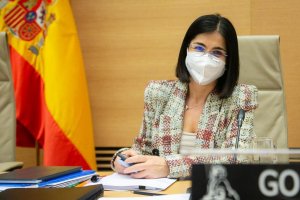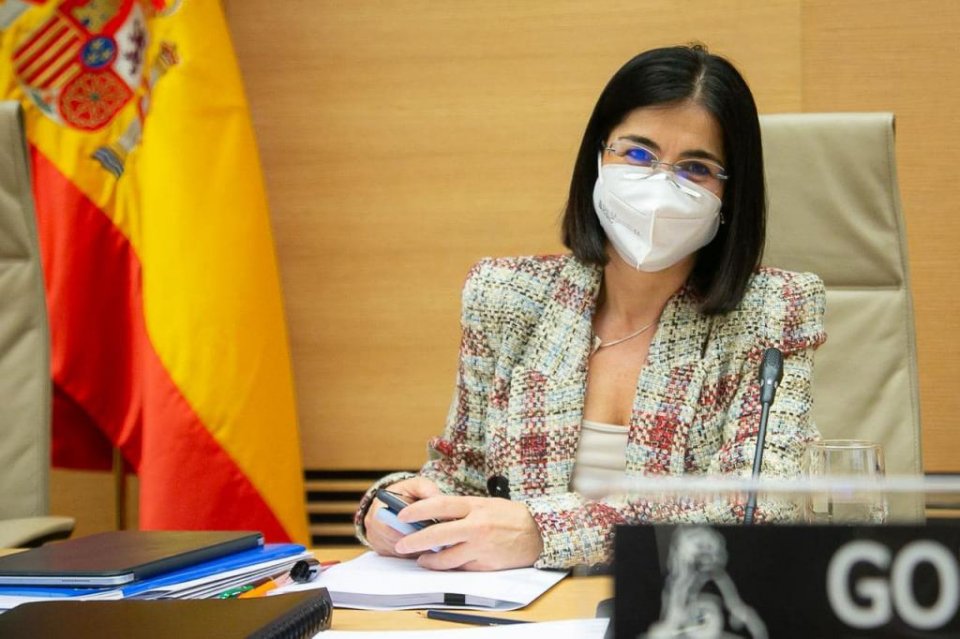Latest: Coronavirus in Spain figures (22 Feb)
ALSO READ: Details of curfews & restrictions for all regions of Spain during ‘State of Alarm’
Please support Spain in English with a donation.
Click here to get your business activity or services listed on our DIRECTORY
Report below updated in Spain at 18.30h on Fri 29 Jan
CORONAVIRUS in SPAIN – latest Health Ministry figures
The latest official figure* released by the Spanish Health Ministry on Friday 29 January for the number of people who have tested positive for Coronavirus since the start of the pandemic is now 2,743,119. This is an overall increase of 38,118 against the figure released on Thursday. The ministry claims that 15,315 of these infections have occurred in the past 24 hours.
The peak of recorded infections for a 24-hour period during what is now being referred to as the ‘third wave’ in Spain was on 21 January, when 18,504 cases were registered. During the ‘first wave’, it was on 31 March when 9,222 cases were registered.
Thursday had seen an overall increase of 34,899 cases against Wednesday, with the ministry claiming that 16,669 had occurred in a 24-hour period. Wednesday had seen an overall increase of 40,285 over Tuesday, yet 18,462 in 24 hours. The ministry has not released figures during the weekends or on national holidays since 3 July.
The overall accumulated incidence rate for Spain has now dropped slightly again to 886.67 per 100,000 inhabitants for the past 14 days. Yesterday it was 889 and last Friday was 828. It still remains over 1,000 in six regions: Castilla La Mancha (1,205), Castilla y León (1,402), the Valencia region (1,431), Extremadura (1,178), Murcia (1,285) and La Rioja (1,347) – and in the autonomous city of Melilla (1,029).
There have now been 416,969 cases of Coronavirus detected in the past 14 days – out of the total 2,743,119. The figure for the past 7 days is 181,716.
There are currently 30,804 people requiring hospital treatment for Covid-19 in Spain, of which 4,723 are in intensive care. This now represents 43.95% occupation of intensive care units (ICUs) by Covid-19 patients. It is now over 50% in six regions: Castilla La Mancha, Castilla y León, Catalonia, Valencia, Madrid and La Rioja – as well as in the autonomous city of Melilla.
The official figure* for the total number of Coronavirus-related deaths on Friday 29 January is now 58,319 – an increase of 513 since Thursday. It is now a total of 1,855 deaths in the past 7 days.
The highest increase of deaths to date for a 24-hour period during this ‘third wave’ in Spain was on 26 January when 591 were registered. The peak of deaths during the ‘second wave’ was on 24 November when 537 were registered. During the ‘first wave’ it was on 2 April when 950 were registered.
Vaccinations given
Latest figures (up to 29 Jan) show that Spain has now received 1,769,055 doses of Covid-19 vaccines (from Pfizer-BioNTech and Moderna), and that 1,474,189 jabs have been administered. This is 83.3% of total vaccines received. 251,866 people have now received a second jab. In a separate report, we have published the amount of vaccines received and administered for each region in Spain. Latest: Covid-19 Vaccinations in Spain
Increase in infections per region
Of the 15,315 new infections claimed by the Health Ministry to have only been registered in the past 24 hours on Friday 29 January, the numbers per region are as follows:
- 4,159 in Madrid (last 24 hour increase was 4,472)
- 2,016 in Castilla y León (2,448)
- 1,694 in Catalonia (1,720)
- 997 in the Basque Country (990)
- 981 in Andalusia (779)
- 854 in Galicia (718)
- 700 in the Valencia Region (1,218)
- 696 in Aragón (894)
- 582 in Extremadura (572)
- 562 in Asturias (547)
- 508 in Murcia (536)
- 315 in the Canary Islands (307)
- 278 in Castilla La Mancha (392)
- 253 in Navarra (228)
- 248 in La Rioja (403)
- 222 in the Balearic Islands (132)
- 151 in Cantabria (201)
- 34 in Ceuta (54)
- 65 in Melilla (58)
A full breakdown of the data per region, together with age group statistics can be found by clicking here.

Covid-19 Vaccination Strategy in Spain
Since 27 December, Spain started administering jabs against Covid-19 with the Pfizer/BioNTech vaccine. From 13 January, the Moderna vaccine has also been used. The health ministry has released a list for how it has divided the Spanish population into 15 groups for vaccination. For the latest data on the number of vaccines received and administered per region in Spain, click here: Covid-19 Vaccinations in Spain
Current ‘State of Alarm’ – restrictions across Spain
Spain voted to extend its current State of Alarm until 9 May 2021. The State of Alarm was initially declared on Sunday 25 October to enable the regional governments the legal requirements to impose and enforce nighttime curfews and other restrictions, where required. Full details here: New ‘State of Alarm’ in Spain.
In a separate report and being regularly updated, we have detailed all the curfew times and key restrictions in place for each region of Spain. Most regions have issued border closures and there are many municipality confinements. Many regions have also restricted the opening hours of bars and restaurants, or ordered their closure. Click here: Details of curfews & restrictions for all regions of Spain during ‘State of Alarm’
Covid-19 test requirements for travellers arriving to Spain
Also read: Spain suspends flight arrivals from UK, except for Spanish citizens and residents
Spain changed the Covid-19 test requirements for travellers arriving to the country from Thursday 10 December, via airports or ports. Since Monday 23 November, travellers arriving in Spain from high-risk countries had to show proof of a negative PCR test done within 72 hours of arrival. A negative result from a TMA (Transcription-Mediated Amplification test) is now also valid, ‘and other tests based on equivalent molecular techniques’. Full report here: Spain changes Covid-19 test requirements for travellers.
*Discrepancies in figures
Although the Health Ministry updated its official Coronavirus mortality figures on 19 June following discrepancies with the data released by some of the country’s regional health authorities – there are still differences in the ‘excess mortality’ figures published for Spain during at least the first half of this year.
Click here for all previous reports on: Coronavirus in Spain
ALSO READ: Details of curfews & restrictions for all regions of Spain during ‘State of Alarm’
Sign up for the FREE Weekly Newsletter from Spain in English
Please support Spain in English with a donation.
Click here to get your business activity or services listed on our DIRECTORY


